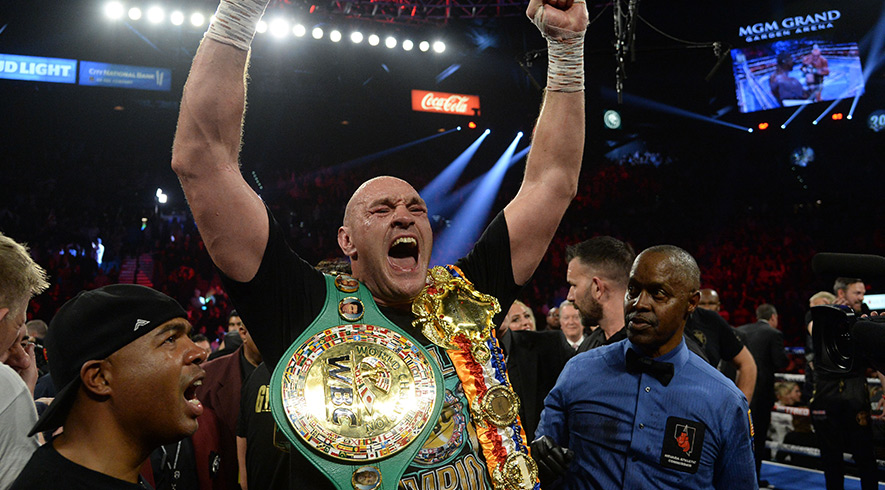By: Sergio L. Martinez
In an ongoing effort to keep NBC Sports boxing Fight Night Series financially viable, Jonathan Miller, head of NBC Sports, recently requested for the Association of Boxing Commissions (ABC) to consider an increase in the time between rounds for an additional seven seconds. This proposal permits one full minute to air commercials in order to be able to meet fiscal responsibilities, while still allowing some time to present highlights and/or statistics of the ongoing fight prior to a round commencing.
Miller wrote:
“NBC has a major concern with the rigid timing between rounds set forth by the Boxing Commissions in each state. We feel strongly this mandate negatively impacts the quality of television production. The Fight Night Series will simply not survive without advertising support and allowing us to be storytellers. We must run two, thirty second commercial units between each round. The inability to come back from a one minute commercial break without any additional time to show highlight(s) from the previous round and set up the next round is a disservice to the boxing viewer and most importantly the athletes who are giving their all in the ring.
“For this reason, the NBC Sports Group is officially requesting an increase from sixty seconds between each round to sixty seven seconds to allow us to better serve our audience and improve the quality of our shows. This change will make the sport more broadcast friendly and substantially increase a boxer’s ability to make a living on a platform other than the pay channels of HBO, Showtime & PPV. The NFL, NBA, MLB and NHL all have adapted to this broadcast friendly model and with their network partners customized mutually beneficial television timings. This timing change will not negatively impact the integrity of competition but only enhance the content in building stars and elevating the great sport of boxing.
“We ask that you give this timing request every possible consideration.”
Main Events president Kathy Duva has been working feverishly for years trying to get boxing back on basic network television; with the support of fellow promoter Russell Peltz, she managed to get the NBC Sports Network on board to produce the Fight Night series. After solid numbers during the flagship programs, NBC Sports significantly expanded the series, adding several more television dates for the next season, including up to three shows to be televised on NBC’s regular network programing. With Miller making the request to the ABC, there is great optimism that boxing may be back on network television soon.
Duva advised Boxing Insider that needing more time between rounds has been a persistent demand.
“This is the first time it is public like this because [Miller] sent the letter, but it has been an ongoing request,” the promoter explains.
“All we get now in extra time is two seconds. That is why a lot of the time when televised shows come back from commercials, the next round has already started. Each commercial is normally 30 seconds long and the transition time between the end of a round, the commercials and the return to the televised fight is anywhere from one to two seconds over the 60 seconds between the round.
“The reason that NBC Sports wants to extend the time is to have the opportunity to show highlights from the previous round upon returning from commercial to be able to retain the viewers that are just tuning into the fight and those that are flipping channels and happen to switch on at that time. It is a proven method to increase and retain viewership during live sports telecasts.”
In reference to boxing’s current business model, Duva explained, “The way boxing is done right now is not a viable approach for commercial television. The sport is suited for cable television because that model has two revenue streams: paid viewership and advertising. In a commercial television model, which is the basic network approach, the only revenue stream available is advertising.
“If boxing is not willing to adapt in order to allow for commercial television to profit from their only revenue stream while also being able to enhance the viewing experience in order to obtain and maintain viewership, then it will be hard to be able to get boxing back on basic network television. With the model that NBC Sports is proposing, their intent is to build the viewership, gain more sponsorship in order to be able to export boxing to their basic broadcast network.”
Since the individual commissions are the ones that will ultimately decide on this (any ruling by the ABC is not enforceable due to there being no national boxing commission), it seems doubtful that the potential benefit of this rule change for the sport as a whole will outweigh any objections.
Duva stated, “We have received significant resistance from several commissions because they feel that the additional time will alter the events because fighters will have more time between rounds to recover. I just cannot wrap my head around this argument as it makes no sense to me. Listen, 60 seconds between rounds is an arbitrary amount of time anyway.”
This statement is accurate, as boxing rules have evolved over time. The current 60-second rest period between rounds format was not the original standard in boxing, as the definition of a round prior to the modernization of boxing was based on a fighter going to the ground after being hit or thrown.
In 1773, John “Jack” Broughton introduced what became known as the “Broughton Rules” which stipulated half a minute for recovery. These rules were legitimized by the London Prize Fighting Rules in 1838. By 1867, the Queensberry Rules of Boxing established the three-minute round timeframe with one-minute rest period between rounds and also provided a 10 count be administered to a fallen fighter as an opportunity to recover and continue in a fight.
The ability to once again broadcast fights on commercial television would be a great step towards bring boxing back to prominence in the United States, as the number of basic network television viewers far exceeds that of any subscription network channel. This, of course, is a proposition that will not likely be well received by the subscription community.
“[This] maybe not be in their best interest but if you just look at the numbers it is in the best interest of the sport,” Duva contends.
“Showtime has approximately 15 million subscribers while HBO has anywhere from 25 to 30 million subscribers. Basic networks have over 120 million homes at their disposal. NBC’s numbers are between 90 to 100 million homes. With that kind of viewership accessible to sponsorship, everyone in boxing would benefit from fights being televised on commercial television again. It just makes complete sense. Why would anyone go against that?”
And in regards to the possibility of the top promoters in boxing who are heavily invested in HBO and Showtime not being receptive to this, Duva feels that the desire to do business with commercial television networks would be welcomed without problems.
“(Richard) Schaefer from Golden Boy has been talking about the possibility of fights on CBS and Top Rank has also mentioned CBS, so they are obviously for this,” Duva explains.
“Promoters would be out of their minds not to want to do this. People ask me if I would rather that Top Rank and Golden Boy not go for network television but I tell them that I pray that they put fights on CBS too. This would mean that the sponsorship base would have grown large enough to support boxing on regular programming and that would be a thrilling thing to me.”
The viewership for the Fight Night series has seen a steady increase, in particular with younger viewers, which is what everyone is after. Duva believes that the increase has occurred because of the approach that Main Events and NBC Sports have taken.
“Our goal is to put on quality competitive fights every time,” Duva says.
“We understand that not every fight will be a Gatti-Ward type fight, but we always strive for that kind of quality. NBC have been just wonderful to work with: they are creative with the way they present the fights and they have put on quality programs. They have allowed us to do our jobs and, although they do expect a certain caliber of fight, they do not get involved in the matchmaking. That is left up to us completely and our goal is to put exciting and competitive fights every time. This is the only way to do a televised boxing event.”
Should boxing make it back to commercial television, Duva feels that it would easily compete with every major sport:
“Everyone knows that a great fight is better than just about anything on television,” she contends.
“Boxing has the potential to really compete on the networks. I’m not saying that we can have the kind of numbers that the NFL has, but I believe that we can pull in the kind of numbers that NASCAR does. People like to watch a good fight. The excitement goes beyond most sports. You tell me what other sport consistently gets viewers to watch rebroadcasts of old events? It just doesn’t happen. Boxing is one that it does. People will watch a rebroadcast of fights all the time. When done right, boxing is a sport people want to watch.”
In the end, boxing’s potential return to prominence on commercial television may be hanging on a maximum total of 84 seconds. Of course, there is no guarantee that if commissions around the United States would get on board and agree to the time extension that boxing would automatically return to the summit of sport broadcasting. But the one guarantee is that should commissions strike this proposed change down, then the chances of boxing ever being a viable commercial television sport will more than likely be gone for good.
Contact Sergio L. Martinez at [email protected]








